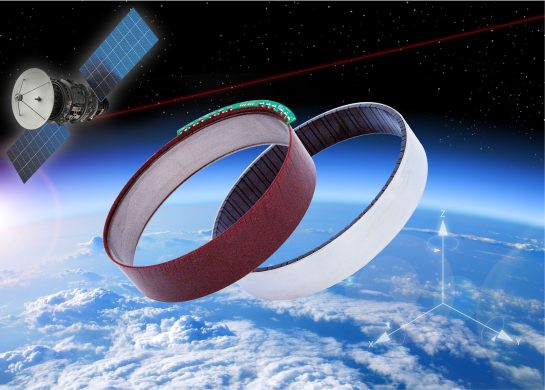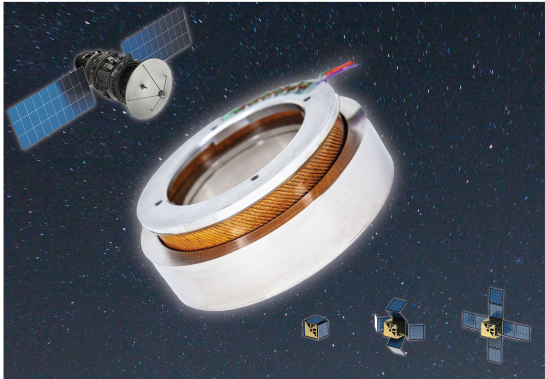With the fast and aggressive build out of Space, namely the rapidly growing number of LEO constellations orbiting Earth, comes the pervasive need for free-space optical communications that allows space-to-space, space-to-air and space-to-ground connections. Point-to-point use of highly collimated light in high-bandwidth communication is critical to the utility of “mesh networks” connecting each spacecraft with each other and to the ground.

Space-rated gimbals used for Satcom and Optical systems need high torque actuation that allows for decisive move-and-hold positioning and smooth motion for long-range target lock. With size and weight constraints being a design objective for spacecraft, a large aperture, low-profile is ideal for deep integration and desired performance. Zero cogging and high linear torque output inherently come with the slotless architecture.
Multi-axial gimbaling mechanisms, like those used in Coarse and Fine Pointing Assemblies can leverage the benefits of high performance Ring Motors to directly drive movement and maintain position. Frameless motor kits offer the further ability integrate the actuation function as part of optimized systems. Optimized systems offering Size, Weight and Power (SWaP) savings, which is highly desirable in any kind of spacecraft application.
Other Space-systems, like larger gimbal-based Control Moment Gyroscopes (CMG) are used for Attitude Control in larger satellites requiring greater quantities of torque and precision. In some cases, to quickly and precisely move in both azimuth and elevation, and in other cases, to quickly compensate for external “tumbling” disturbances common in orbit.
ThinGap’s LS Series of slotless motor kits is an industry leader for gimbal applications requiring high performance and efficiency. Using a proprietary design, thin wire-wrapped stators and optimized permanent-magnet rotors, ThinGap provides that can match the torque output of slotted motors while avoiding the cogging that plagues them.
ThinGap’s LS line of slotless motor kits range in size from 25 to 267 mm diameter and torque from .1 to 12 N-m continuous. With standard and modified configurations, the product line will cover voltages from 24-400 volts and current from 1 to 100 amps. Hall devices and special configurations are also available.
To learn more about the LS Series, click here.




